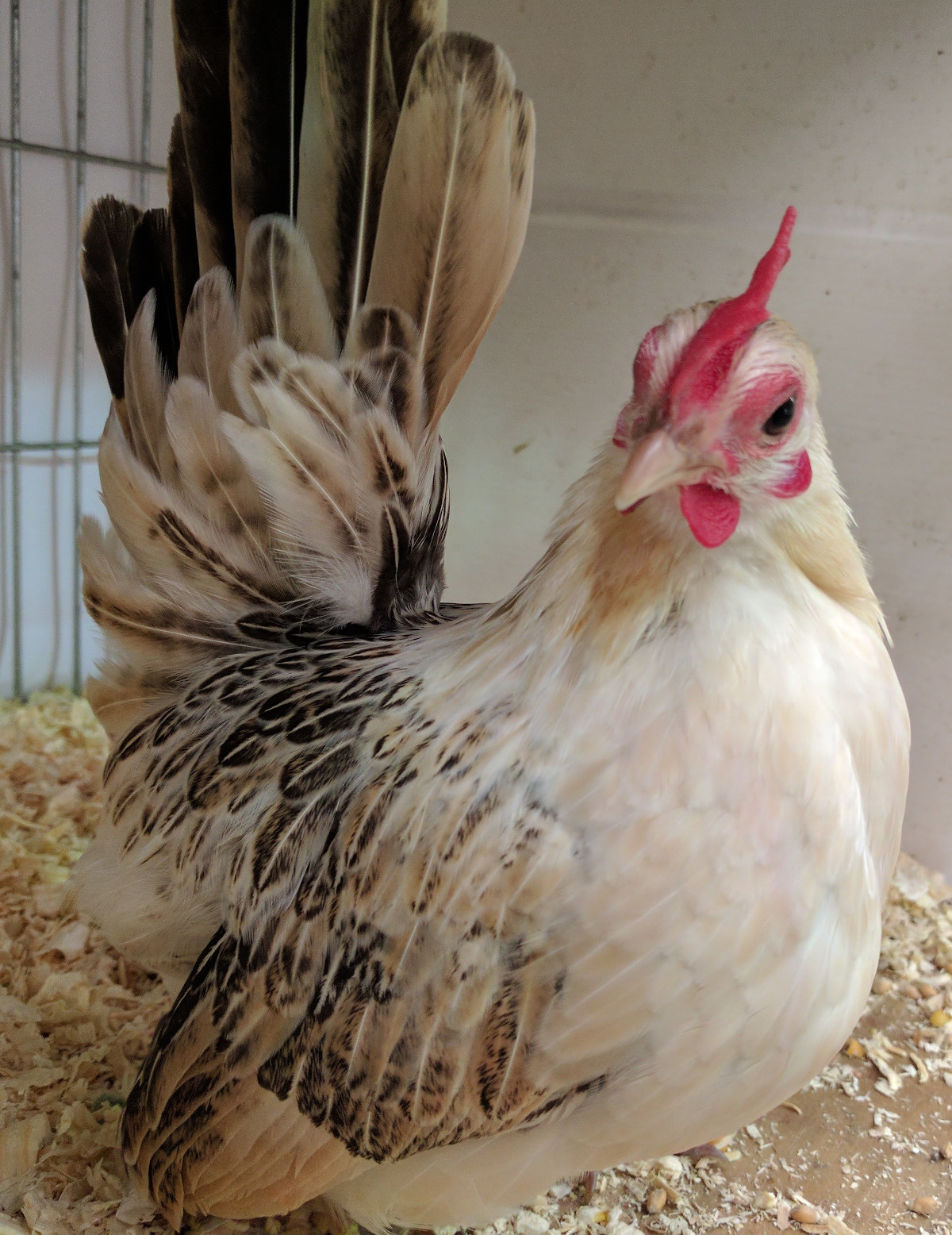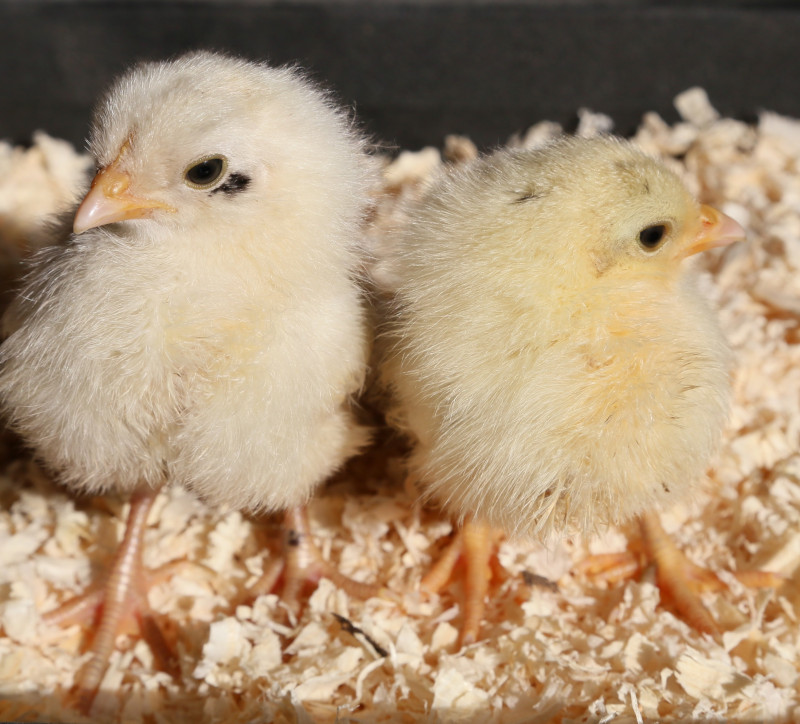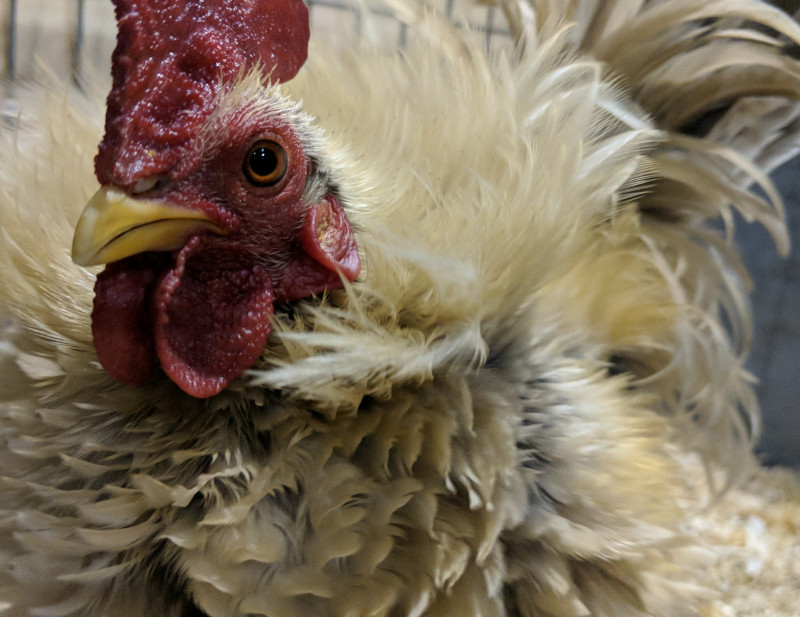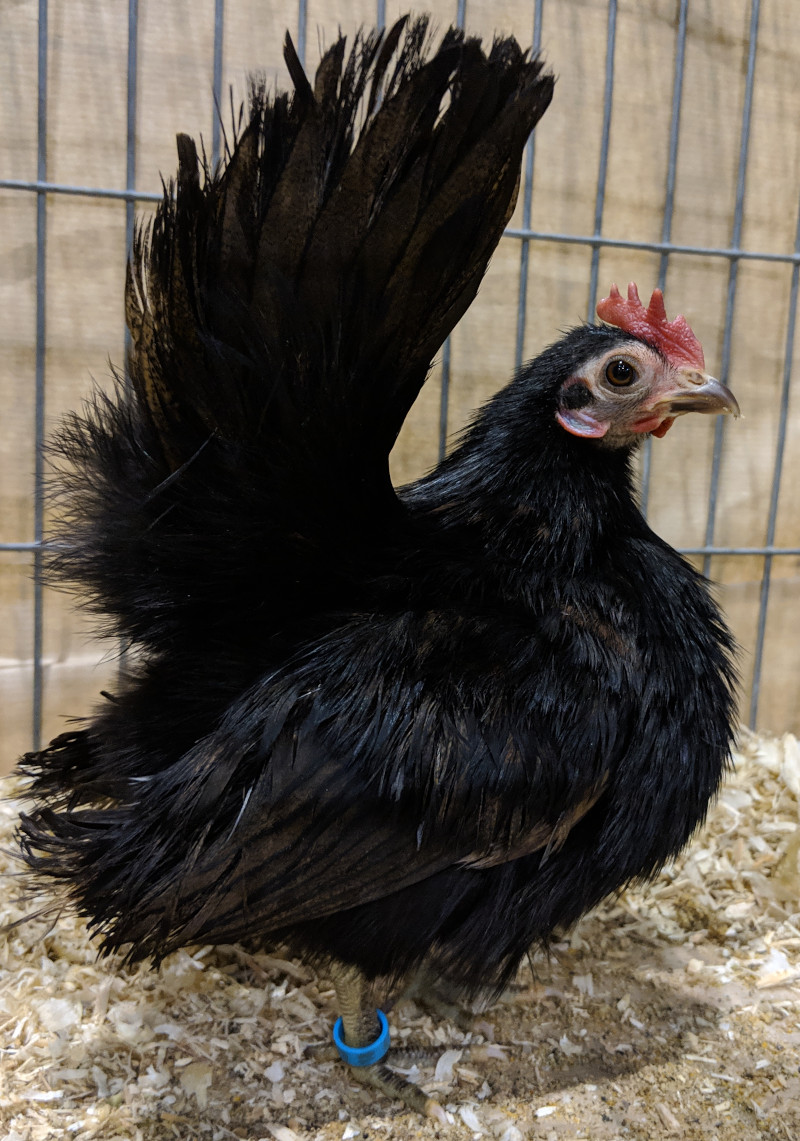
The genetics of the Japanese bantam.
The Japanese bantam has several problem genes in its makeup. The biggest problem is that however you pair up your breeding birds you will only ever get 50% offspring with short legs.
Table of Contents
The lethal creeper gene in the Japanese bantam:
The Japanese bantam is bred for its short legs. Regrettably this gene brings a dominant lethal gene that means that 25% of chicks never hatch and die in shell during late incubation.
When the long-legged Japanese bantams are bred together, they never produce offspring with short legs.
The creeper gene notation is:
Cp - Short legged allele. This copy of the gene is completely dominant and lethal in homozygous state.
cp+ - Normal legged or wild-type allele. Chickens with this copy of the recessive gene will have normal legs or lack of creeper trait.
Below: Here is a comparison between a normal legged (left) and short legged (right) Japanese bantam chick.

- Breeding 2 short legged creeper birds = 25% dead in shell, 50% creeper, 25% Normal legged.
- Breeding 1 short legged creeper to 1 normal legged = 50% short legged creeper, 50% normal legs.
Frizzle feathered Japanese bantams:
The best frizzle or curly feathered Japanese bantams are bred for a cross with normal feathered birds.
To further complicate the genetics of the Japanese bantam, Frizzle feathering can be Silkie feathered as well
Below: A frizzle feathered Japanese bantam:

The Frizzle gene also causes abnormalities and enlargements in some of the internal organs.
Frizzle X Frizzle = 25% normal, 50% Frizzle and 25% Frazzle.
Silkie feathered Japanese bantams:
The Silkie feather genes are either recessive (h) giving the feathers the woolly appearance, and the Dominant (H+) for the normal feather structure.
Below: A Silkie feathered Japanese bantam hen.

These birds that carry a recessive gene like the Silkie feathering gene, but do not express it are called "split".
With Silkie feathered Japanese bantams if you breed:
- Silkie X Silkie = 100% Silkie feathering.
- 2 normal feathered birds together = 100% normal feathering.
- Split X split = 25% normal, 50% split and 15% Silkie feathered.
- Silkie X normal feathered = 100% split.
- Split X normal feathered = 50% split, 50% normal feathering.
- Split X Silkie = 50% split, 50% Silkie.
